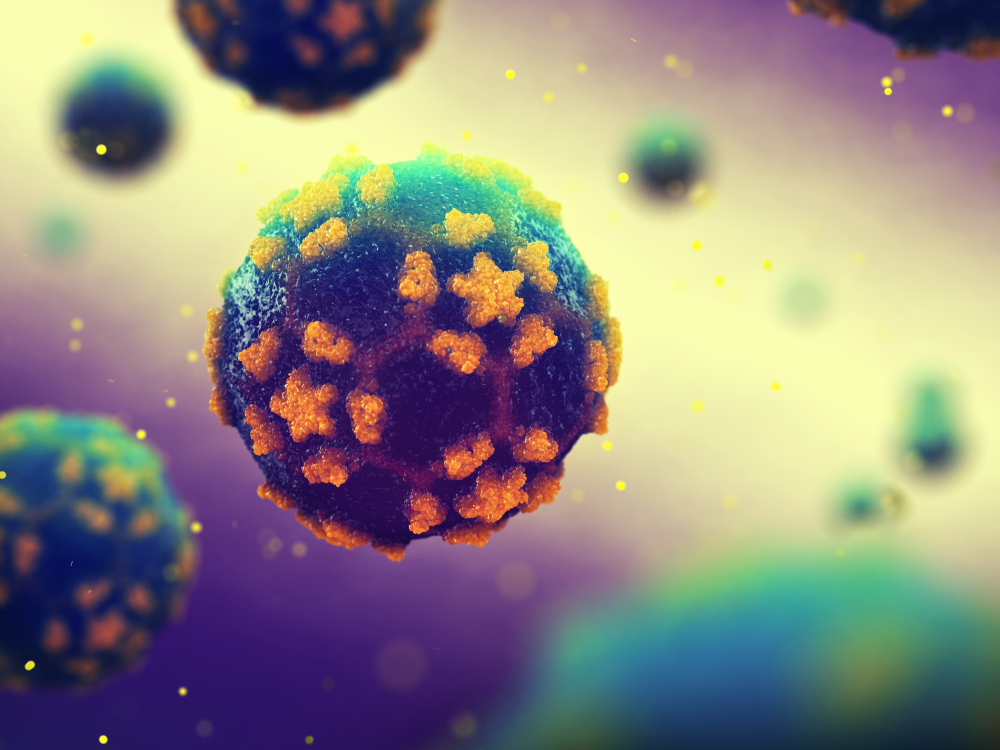ECHOVIRUS ANTIGEN, RECOMBINANT
Echovirus antigen, recombinant has been manufactured in E. coli for use in the detection of IgG, IgM and IgA antibodies against Echovirus.
PRODUCT DETAILS – ENTEROVIRUS ANTIGEN, RECOMBINANT
- Recombinant echovirus antigen.
- Expressed in E. coli and purified by chromatography.
- Availible in liquid format and buffered 39 mM Tris/HCl pH 8.0, 150 mM NaCl, 10 % glycerol.
- Individually pooled antigens shown to react with QC serum panel (multiple negative, borderline and positive sera) within defined reactivity range in Coxsackie-/Echovirus IgA, IgG and IgM ELISA.
- For immunoassay development or other applications.
BACKGROUND
An ECHO (enteric cytopathic human orphan) virus is an RNA virus that belongs to the species Enterovirus B, genus Enterovirus of the Picornaviridae family. They are distributed worldwide and make up the largest Enterovirus subgroup, consisting of 29 serotypes. Echoviruses are found in the gastrointestinal tract and exposure to the virus causes other opportunistic infections and diseases. They are common human pathogens that cause a range of illnesses, from minor febrile illness such as common cold to severe, potentially fatal conditions (eg, aseptic meningitis, encephalitis, paralysis, myocarditis). The human pathogenic strains include Echoviruses 1–7, 9, 11–27 and 29–33. Echovirus is highly infectious, and its primary target is children making it one of the leading causes of acute febrile illness in infants and young children, and is the most common cause of aseptic meningitis and neonatal sepsis-like disease (Lee et al., 2017; Suresh et al., 2019).
Echovirus particles are 24–30 nm and have a naked protein capsid, which makes up 75% of the virus particle. The capsid encloses a dense central core of single-stranded RNA of approximately 7.5 kb. The genome contains an RNA replicase, viral-coded proteins, and a single polyprotein that is responsible for the formation of structural proteins and other proteins required for cellular replication. The structural proteins determine host range and play a very important role in delivering the RNA genome into the cytoplasm of new host cells. Some viral replication of an echovirus occurs in the nasopharynx after infection and then spreads to regional lymph nodes but most viral particles are swallowed and they reach the lower gut tract, where the virus is presumed to bind to specific receptors. The virus then spreads to the lower intestinal tract, prior to spreading to different secondary sites in the body such as the central nervous system, liver, spleen, bone marrow, heart and lungs. Additional replication of the virus will then occur, causing symptoms 4 to 6 days after infection. Transmission of Echoviruses is predominantantly person-to-person either directly or indirectly by the the fecal-oral route (Harvala and Simmonds, 2009). No specific treatment for echovirus infection is currently available.
REFERENCES
- Harvala and Simmonds (2009). Human parechoviruses: biology, epidemiology and clinical significance. J Clin Virol. 2009 May;45(1):1-9.
- Lee et al. (2017). Seroepidemiology of echovirus 30 in Korean children. World J Pediatr.v13(6):611-614.
- Suresh et al. (2019). Virus-like particles and enterovirus antigen found in the brainstem neurons Global epidemiology of nonpolio enteroviruses causing severe neurological complications: A systematic review and meta‐analysis. Rev Med Virol. e2082.

